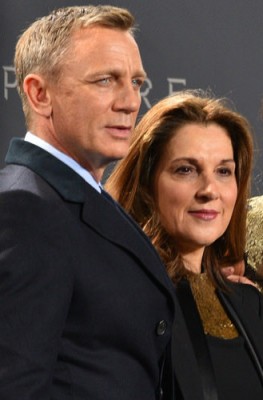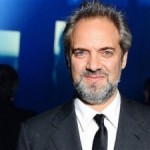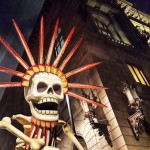
After the spectacular success of Skyfall (2012), many observers and Bond aficionados wondered how the next Bond film could match Daniel Craig’s third 007 adventure. There was also intense interest in whether director Sam Mendes could be tempted to return. At first, he seemed reluctant. When Mendes finally agreed to do so, there was considerable pressure to deliver something both ‘traditional’ and contemporary. How did Mendes approach this challenge?
The JBIFC takes the opportunity to look back on Spectre, Craig’s fourth 007 adventure as Ian Fleming’s secret agent.
After principal photography commenced on Monday, 8th December, 2014, production on the film lasted (00) seven months. Released in autumn, 2015, after an impressive Royal world premiere held at the Royal Albert Hall in central London, the 24th 007 movie once again broke box-office records in the UK and generated an estimated $880m worldwide, becoming SONY’s highest grossing film of 2015.
As with Skyfall, Sam Mendes had seemingly helmed another hugely popular 007 movie, rising to the huge creative challenges once again. As he commented in 2015: ‘Working on a Bond movie is not really a job; it’s a way of life’.
The JBIFC offers seven bullet-points on some of the known and perhaps less well-known aspects of the creation of the 24th EON Bond movie.
007 and Counting…
001: After the release of Skyfall, which broke many box-office records in a truly stunning way, the EON producers Barbara Broccoli and Michael G. Wilson realised this would be a hard act to follow and were naturally very keen to woo director Sam Mendes back and reassemble his team. Conversations about this had actually taken place during production of Skyfall. However, Mendes had eventually ruled himself out from Bond 24, citing his theatre and TV commitments, and also feeling that he had ‘cashed in’ all his creative chips and thrown everything he could into Bond 23.
002: In February, 2013, Mendes announced that he had made the ‘very difficult decision’ not to direct the new movie. Then, dramatically, just a few months later in May, 2013, rumours emerged (true, as it turned out) that the director was back in discussions with the EON producers.

Shortly afterwards, in an official press release issued to the media on 11th July, 2013, EON Productions and MGM/SONY confirmed that Sam Mendes was returning as the director for Bond 24. A deal that suited Mendes, and – importantly for him – took account of his other creative projects, had been struck.
It was also clear that EON could now breathe easily again, reassured that the new entry in the franchise was in a safe pair of hands. Bond star Daniel Craig was also said to be pleased, happy to be working once again with the same director and creative team.
003: A special press call for Bond 24 was held live from the 007 sound-stage at Pinewood Studios on 4th December, 2014, where a clearly-elated Mendes announced the film’s new title (Spectre) which, he said, he did not ‘have to go into details about’ for James Bond fans ‘for obvious reasons’. With EON producer Barbara Broccoli standing at his side, Mendes made some key cast announcements and introductions, and also unveiled to an excited media the brand new Aston Martin DB10, which he called ‘a thing of beauty’. He said the car had been specially developed for the new movie by the Aston Martin company.
004: As with the late producer Cubby Broccoli, who had worked in the funeral industry and had created something of an in-joke ‘tradition’ in the James Bond movies concerning the theme of death and funerals (see Dr. No, Thunderball, You Only Live Twice, Diamonds Are Forever, Live and Let Die, Moonraker and so on), Spectre tapped into and exploited this suitably ‘Bondian’ and macabre topic.

Both Mendes and Craig were big admirers of Ian Fleming’s novel Live and Let Die and the voodoo elements within the book, and both had also seen Roger Moore’s debut 007 film as youngsters, finding parts of the 1973 movie genuinely frightening. Mendes, as a kind of homage to this, used the haunting but beautiful ‘Day of the Dead’ celebrations in Mexico City as the eye-catching backdrop for the spectacular action sequences contained in the pre-credits to Spectre. Much to the glee of Bond fans, the famous gunbarrel returned to what many saw as its rightful place, and there was some loud drum music and plenty of gothic-style costumes to open the dramatic opening sequence. Even Bond’s top-hat and skeleton outfit was arguably a nice tribute to the ghostly Baron Samedi from LALD.
005: Even before production had begun, co-writer John Logan had dropped plenty of hints that he was keen to re-introduce Ernst Stavro Blofeld to the franchise. Blofeld, of course, had been a major villain in the later Fleming novels, and had featured prominently in the Sean Connery and George Lazenby Bond movies up to 1971, and had even returned in Kevin McClory’s 1983’s non-official Bond movie Never Say Never Again.

Moreover, in November, 2013, MGM announced they had purchased all the remaining story rights to the character of Blofeld and his SP.E.C.T.R.E. organisation from the late Kevin McClory’s estate (McClory had died in 2006).
Sam Mendes thus had the good fortune to enjoy EON’s new ownership rights to Ian Fleming’s Blofeld and the criminal SP.E.C.T.R.E. network; on the other hand, Mendes also realized this opportunity had to be handled with care. He did not want to fall into the trap of merely copying previous incarnations of Blofeld – he wanted a ‘fresh take’ on the character. He also wanted to bring Blofeld back but without audiences immediately knowing what was really happening. Having Blofeld in shadow was also part of this teasing of the audience, something that had also been done in the early Bond movies.
006: The acclaimed Oscar-winning actor Christoph Waltz was thus cast as ‘Franz Oberhauser’ (Blofeld). Intriguingly, earlier versions of the script (for obvious security reasons) had the character named as ‘Heinrich Stockman’ and even ‘Ernst Serban’.

Waltz made a very good job during production of Spectre of keeping the ‘Blofeld secret’ absolutely under lock-and-key and enjoyed teasing the press, regularly denying that he was Blofeld. Waltz had been enthusiastic about joining the production and felt Craig’s Bond had taken 007 in fascinating new artistic and creative directions. He was also pleased to be working with Mendes, as they were both, he noted, ‘theatre animals’. Interestingly, in later interviews, Waltz said his German-Austrian interpretation of Blofeld had been partly inspired by the German actor Gert Frobe’s interpretation of Auric Goldfinger. However, Waltz also said he had been personally dissatisfied about his role as Blofeld. As we now know, of course, in No Time To Die, Waltz was given the opportunity to address this and have another bite at the Blofeld cherry (so to speak). However, his return as Blofeld seemed all too brief and, much to the dismay of some Bond fans, the head of SP.E.C.T.R.E. was killed off!
007: Mendes has always taken the view that, with a 007 movie, a director has a ‘unique opportunity’ with the first 10 minutes of the movie in the sense that the audience is open to be entertained and dazzled: and for Spectre he wanted to also do something ‘with a different rhythm’. Indeed, critics of the movie were especially impressed with the pre-credits sequence to Spectre.

Significantly, during the actual production of the movie, EON co-producer Michael G. Wilson had told the UK’s film magazine Empire at the time that he felt that ‘it is maybe the biggest sequence we’ve done’, while Daniel Craig, speaking to the UK’s Mirror newspaper when he was still filming in Mexico, commented: ‘It’s one of the biggest opening sequences I think the Bond franchise has ever done’. Speaking live on stage at a BAFTA: A Life in Pictures interview, conducted in November, 2015, Mendes spoke in some detail about the challenges of the Spectre pre-credits sequence, which included a hotel rooftop sequence with Craig and some truly breathtaking helicopter footage shot over the famous Zocalo Square in Mexico City. He said coordinating 2,000 or so people gave him ‘a real high’ as a director when it went well.
He was also especially proud, he said, of the continuous single-take style footage used in the first few moments of Spectre (a technical feat he re-used again in his highly-praised recent war movie 1917).
Interestingly, Sir Sam Mendes (as he now is) has evidently not lost his appetite for major flim projects. In February, 2024, the director announced that he had obtained permission from Sir Paul McCartney, Sir Ringo Starr and the families of John Lennon and George Harrison to make four feature-length films dramatising the life of each of the Beatles, to be released in 2027. Mendes said: ‘I’m honoured to be telling the story of the greatest rock band of all time, and excited to challenge the notion of what constitutes a trip to the movies’.
Did You Know?
In another nod to the Bond franchise’s regular dalliance with the topic of death, there was, of course, a brief return for Judi Dench’s deceased ‘M’ in Spectre, and also a funeral in Italy for Marco Sciara, where Bond also encounters his widow. But an early draft of the story treatment for Spectre contained another death-related scene: originally, there was to be a scene set in the real-life Highgate Cemetery in north London where, next to the late M’s grave, Bond converses with Moneypenny, asking her to secretly work with him against orders. In hindsight, it seems a shame this sequence was not used.

For their eyes only: director and cast at a press event for ‘Spectre’.
